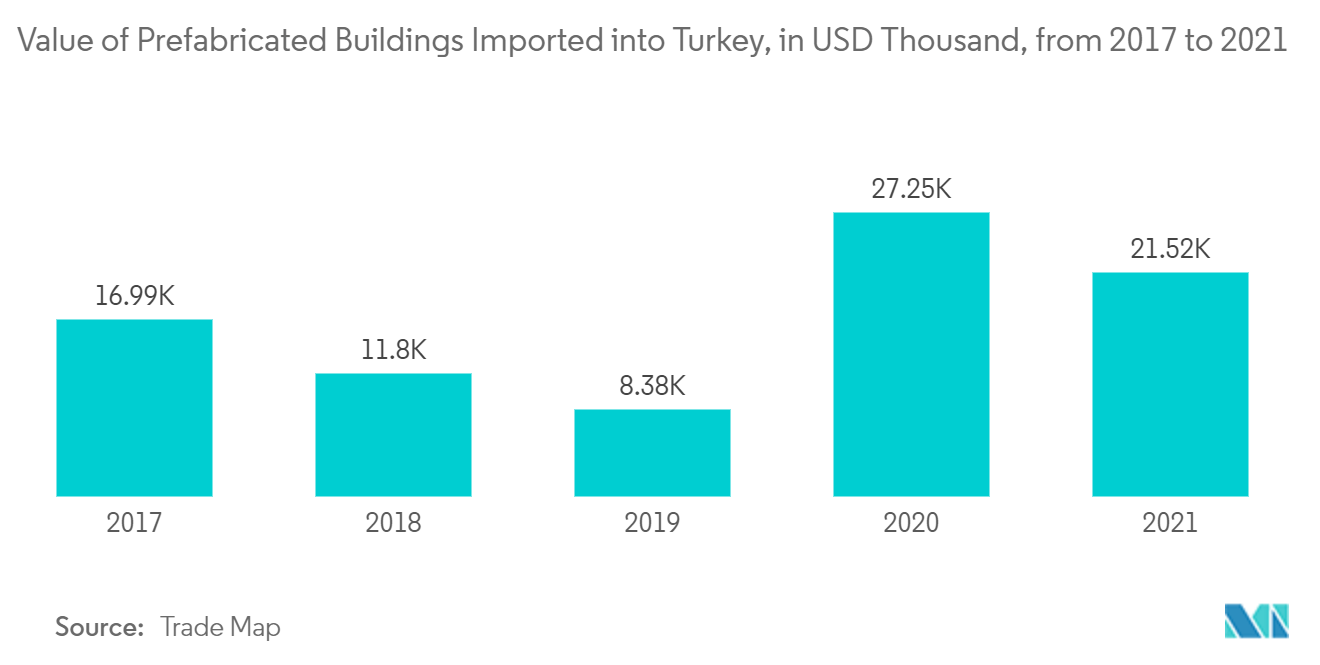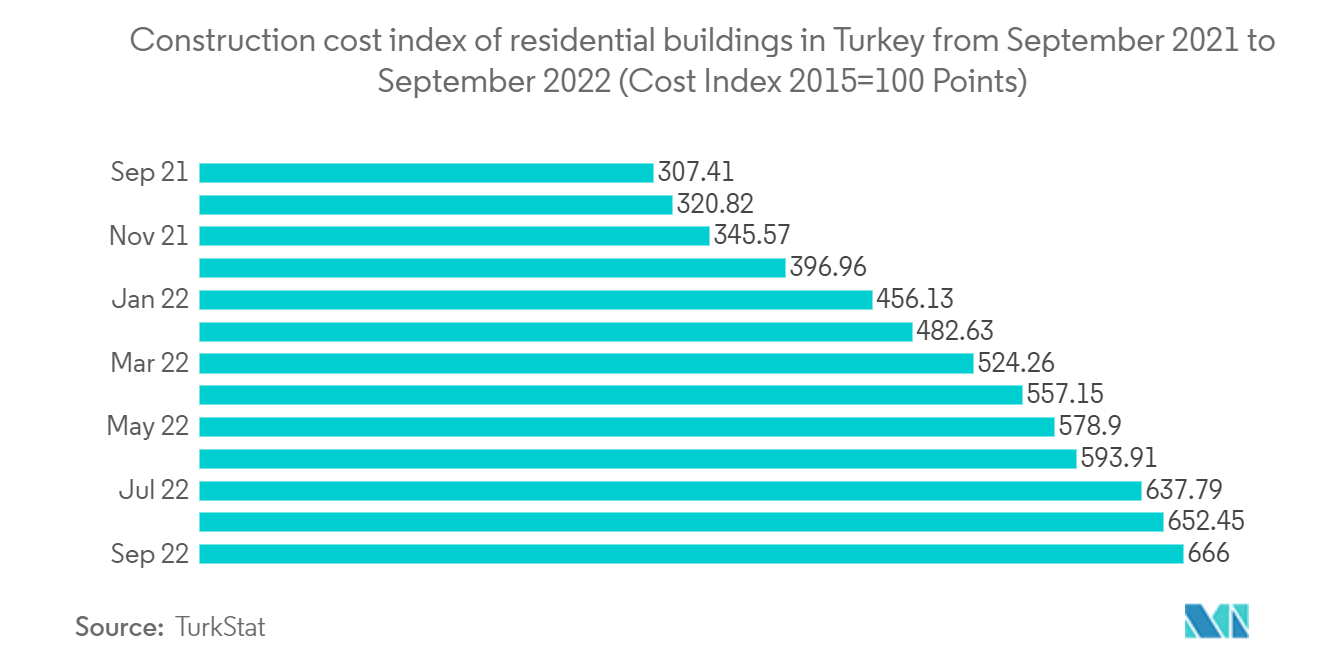Market Trends of Turkey Prefabricated Buildings Industry
This section covers the major market trends shaping the Turkey Prefabricated Buildings Market according to our research experts:
Increase in demand for Prefabricated Buildings
Modular, prefabricated buildings provide efficient construction solutions for both temporary and permanent applications. With the rapid increase in the population in Turkey, the need for low-cost housing has become essential. Increasing housing prices and the search for more affordable and nature-friendly dwellings in the great outdoors amid the COVID-19 pandemic have boosted demand for small, prefabricated, mobile tiny houses in Turkey. According to official data released by the Turkish Statistical Institute, around 1.5 million prefabricated tiny houses were sold in 2021, a year-on-year increase of 30 percent.
Sales of prefabricated buildings in Turkey have increased three- to fourfold. This is especially true when an earthquake strikes and destroys thousands of properties. Along with the increasing demand for prefabricated housing, the demand for land in Turkey also continues to grow. Small plots of land for individual use are especially popular today. Those who are afraid of the risk of earthquakes or have already suffered from the disaster now prefer to buy land to install a prefabricated house instead of an apartment in Turkey.
After the earthquake, the demand for prefab buildings went up, so the prices of demountable structures for sale in Turkey went up by 40% in just two weeks. Before the earthquake, prefabricated houses in Izmir province were for sale for between 70,000 and 100,000 Turkish Liras (USD 9,750 and USD 12,750). Now, according to Rdvan Akgün, the chairman of the Zmir Real Estate Club, they are for sale for between 150,000 and 200,000 Turkish Liras (USD $19,000 and USD 25,500).

Increasing Conventional Construction Cost is Driving the Market
Prefabricated buildings take about a week to be installed in Turkey and can range from 180 USD per square meter to 280 USD per square meter. Starting prices include plumbing and wiring, bathroom plumbing, fixtures, and painting on the outside and inside of the prefab house, but not a basic package of some special materials.
From January 2015 to September 2022, the construction cost index for homes in Turkey went up on average. As of September 2022, the index had reached 666 points, which was the highest value seen during the time period that was looked at. Also in Turkey, the high demand for land and lack of building materials are driving up the cost of traditional construction. Thus, supply shortages in construction materials and rising costs are fueling the prefabricated building market in Turkey.
The Turkish Statistical Institute (TUIK) announced the costs of data construction in Turkey. Accordingly, the construction cost index increased by 4.41% in May 2021 compared to the previous month and by 39.56% compared to the same month of the previous year. Compared to the previous month, the materials index rose 6.32%, while the labor index fell 0.03%. In addition, compared to the same month of the previous year, the material index in Turkey increased by 49.45%, and the Turkish labor index increased by 19.97%. The rising costs of conventional construction are driving the adoption of prefabricated structures in Turkey.

